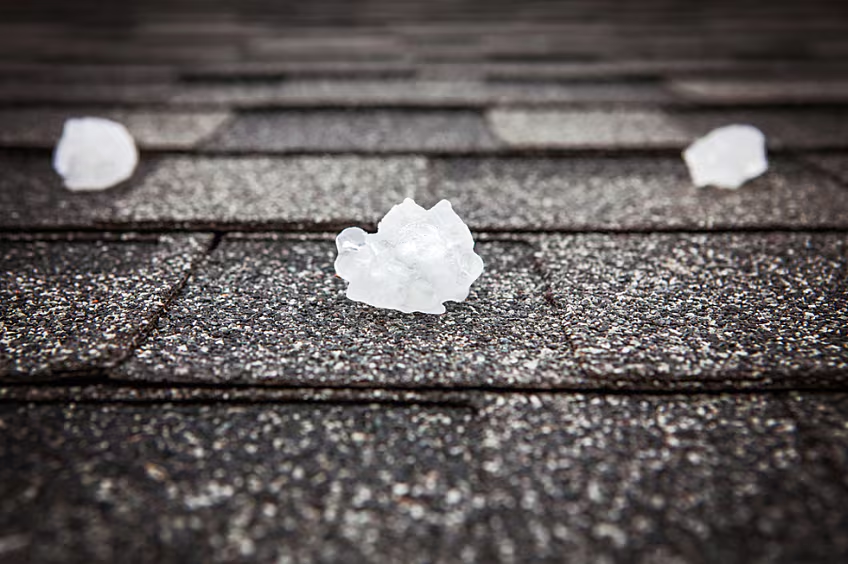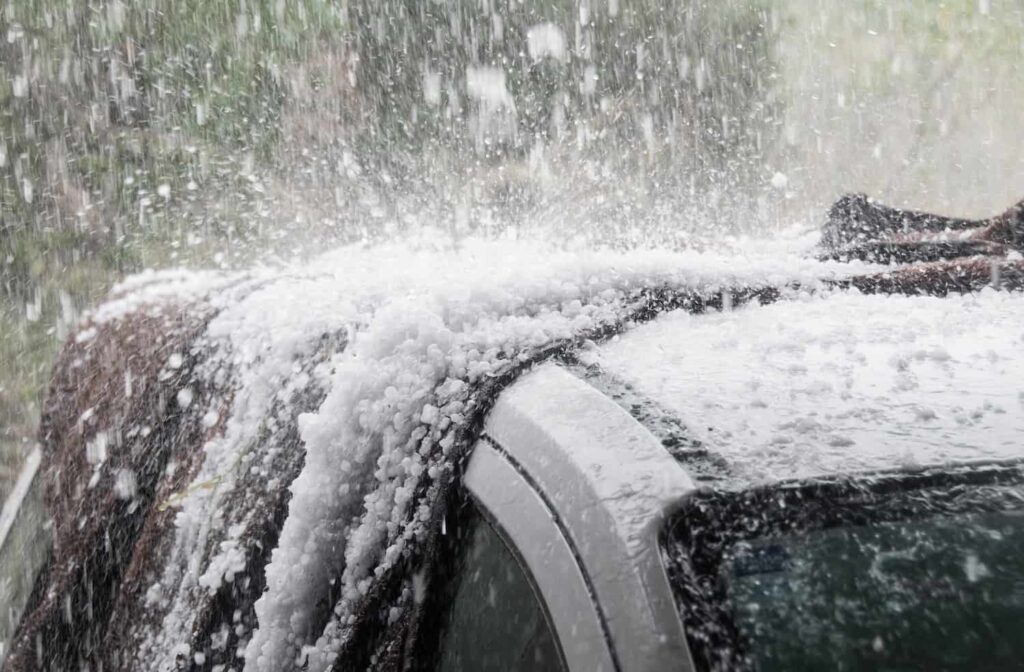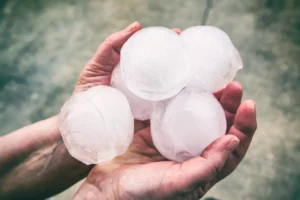Hailstorms can be both fascinating and destructive. Understanding how hail forms can help us appreciate the power of nature and better prepare for severe weather. This article will explore the formation of hail, discuss why certain regions, like the southern United States, experience it more frequently, and how it can impact your roof.
What is Hail?
Hail is a form of solid precipitation that consists of balls or irregular lumps of ice. These ice stones, called hailstones, can range in size from small peas to as large as grapefruits. Hail forms within thunderstorms, specifically in the strong updrafts of cumulonimbus clouds.

How Does Hail Form?
The formation of hail requires specific atmospheric conditions:
- Moisture: A significant source of moisture is needed to create the water droplets that eventually freeze into hail.
- Unstable Air: Warm, moist air near the surface and colder air aloft create an unstable atmosphere, leading to strong updrafts.
- Updrafts: Powerful updrafts within the thunderstorm carry water droplets high into the atmosphere, where temperatures are well below freezing.
- Freezing: As the water droplets rise, they collide with supercooled water droplets (water that remains liquid below freezing point). These supercooled droplets freeze onto the ice particles, causing them to grow.
- Layering: The hailstone may be repeatedly lifted by updrafts and fall through the cloud, accumulating more layers of ice. This process creates the characteristic layered structure seen when a hailstone is cut open.
- Weight: Eventually, the hailstone becomes too heavy for the updraft to support, and it falls to the ground as hail.
Why is Hail More Prevalent in the South?
Several factors contribute to the higher frequency of hailstorms in the southern United States:
- Warm, Moist Air: The Gulf of Mexico provides a constant source of warm, moist air, which is crucial for thunderstorm development. This moisture-rich environment fuels the formation of large hailstones.
- Strong Temperature Gradients: During the spring and early summer, the South often experiences strong temperature gradients. Warm, moist air from the Gulf collides with cooler air masses moving down from the north. This clash of air masses creates the unstable atmospheric conditions necessary for severe thunderstorms and hail.
- Jet Stream Influence: The position of the jet stream can also play a role. When the jet stream dips southward, it can enhance the lift in the atmosphere, further promoting thunderstorm development.
- Convective Available Potential Energy (CAPE): The South often has high CAPE values, which measure the amount of energy available for thunderstorms. Higher CAPE values indicate a greater potential for strong updrafts and severe weather, including hail.

The Impact of Hail on Your Roof
Hailstorms can cause significant damage to roofs, potentially leading to leaks and other structural issues. The extent of the damage depends on several factors, including the size and density of the hailstones, the type of roofing material, and the age and condition of the roof. Common signs of hail damage to roofs include:
- Dents and Cracks: Hailstones can create dents, cracks, or fractures in roofing materials like asphalt shingles, tiles, or metal panels.
- Granule Loss: Asphalt shingles can lose their protective granules, exposing the underlying asphalt layer to the elements. This can accelerate the aging process and reduce the roof’s lifespan.
- Broken or Missing Shingles: In severe hailstorms, shingles can be broken, torn, or completely dislodged from the roof.
- Water Leaks: Hail damage can compromise the roof’s ability to repel water, leading to leaks inside the home.
How Browns Roofing Can Help
After a hailstorm, it’s crucial to have your roof inspected for damage by a qualified professional. Browns Roofing is here to help! Our experienced team can assess your roof for hail damage, provide a detailed inspection report, and offer expert advice on the best course of action. We can assist with:
- Comprehensive Roof Inspections: We’ll thoroughly examine your roof for signs of hail damage, including dents, cracks, granule loss, and broken shingles.
- Insurance Claims Assistance: We can work with your insurance company to help you navigate the claims process and ensure you receive fair compensation for your roof repairs or replacement.
- Roof Repair and Replacement: Whether you need minor repairs or a complete roof replacement, Browns Roofing provides quality workmanship and reliable service.
Staying Safe During a Hailstorm
- Seek shelter indoors immediately.
- If you are in a vehicle, pull over to a safe location and protect your head and neck.
- Stay away from windows and doors.
- Monitor weather forecasts and warnings.
Don’t wait until a small problem becomes a major headache. Contact Browns Roofing today for a roof inspection after a hailstorm!
By understanding the science behind hail and its potential impact on your roof, you can take proactive steps to protect your home.



